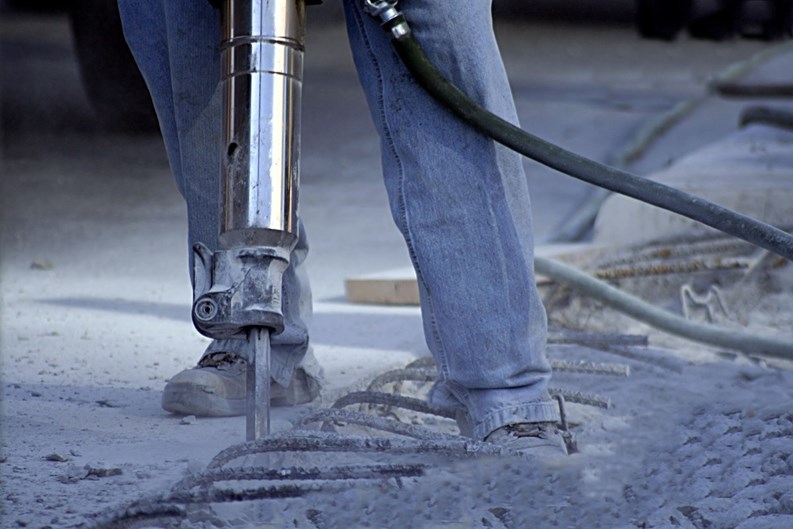Whenever a new residential building is proposed in any New York City neighborhood, people inevitably object to the project. Their reasons are as varied as their neighborhoods, and range from concerns about gentrification and retaining the socioeconomic or architectural character of the neighborhood, to the more imminent worries of noise and other issues that are part and parcel of having a major construction project on the block.
Trouble in Gotham City
Whether it’s a structure demolition, an excavation, or the alteration of an existing building, large construction projects sometimes cause big problems and inconveniences for the neighbors. And when there’s little or no communication between the developer and those living right next to the project site, if one side or the other is completely unyielding in its approach, or doesn't adhere to the letter of the law, problems can arise. In worst case scenarios, the impasse can get ugly, with angry graffiti messages chalked or sprayed onto equipment or walls surrounding the project. Or the dispute can even become the subject of a lawsuit.
But a new building going up or a major change being made to an existing building in the neighborhood needn’t cause undue consternation. Such a project can actually be an opportunity, serving as a way to begin to meet the new neighbors or to renew old acquaintances with existing neighbors. And as with so many aspects of city living, communication is key to preventing disputes, and settling them quickly when they're unavoidable. Lack of communication can make the imaginations of neighbors run wild; knowing a simple fact such as how long the project is expected to go on can go a long way toward calming some residents’ fears.
Starting Discussions
While there is no formal preliminary notification or discussion that developers must have with neighborhood residents prior to starting a project, residents can learn about the project before it’s up and running. One way is through a Notice of Demolition, which the contractor must deliver to neighbors two to five weeks prior to demolition. And of course planned construction projects in the city, as in all municipalities, must first get approval by the local government before construction can begin.
But if a builder wants to begin construction that is not “as of right,” such as when a variance is required in order to build taller than is currently permitted under zoning for the area, the developer will need to go to the community board, where neighbors can voice their concerns, says attorney Marc Luxemburg, a partner with the law firm of Gallet Dreyer & Berkey, LLP in Manhattan.
Most construction projects in New York City require permits and approval from the Department of Buildings (DOB). Some work that is essentially cosmetic doesn’t require a permit, including painting, plastering, plumbing fixture replacement, cabinet installation, and non-structural roof repair. All construction projects in the city must comply with the New York City Construction Codes and the city’s zoning resolutions. The city’s construction codes consist of the 2008 Building Code, the Plumbing Code, the Fuel and Gas Code, the Electrical Code and the New York City Energy Conservation Code. Zoning resolutions are written by the city’s Department of City Planning and is enforced by the DOB.
In many communities, residents can attend a planning or zoning board meeting during which the proposed project is being discussed, and voice their concerns about the project. Then if they like, government officials can require the developer or contractor to communicate with owners of the properties adjoining the construction site. But in New York City, a hub of construction activity with some of the most sought-after real estate in the world, the DOB has streamlined the process so much that permits for construction work can be submitted and approved entirely online.
This doesn’t mean the public can’t keep an eye on what’s planned or under construction in their neighborhood; they can look via web camera at the projects that are in their neighborhood by visiting the DOB website. Through the website, residents can scrutinize which projects are stalled, which have received violations, and also peruse permits for the projects around them.
Being neighborly regarding a large construction project nearby—on the part of those on both sides of the project fence—is important. Lack of communication can be the start of a series of problems.
“We have had cases where the next door developer didn’t talk with us, and as a result our client had serious foundation problems,” says Kurt Rosenbaum, owner of Nanuet-based engineering & architecture firm KRA Associates. “The first thing I want to know [of a next door project] is what are they doing? What’s the possibility of it affecting my client’s building?”
That’s why experts recommend that both developers and neighbors begin friendly communications about the project as soon as possible, even before it begins. Pros such as Rosenbaum will want to know of the potential for structural damage from the work, and how much of a disturbance it will create for residents. Will the project affect use of the next door neighbor building’s roof?
Rosenbaum says that when construction will be happening next door, his firm expects to receive a project schedule. “Good contractors know how long it takes to do a job, and will schedule accordingly,” he said.
Eugene Ferrara, president of JMA Consultants & Engineers, PC, based in Englewood Cliffs, New Jersey, says as soon as his firm knows about a new project, they contact the neighbors along with the owners, managing agent and super, to begin a dialogue to talk about scheduling of the project. “The biggest mistake is showing up without notice and putting up a sidewalk bridge,” he says.
All the pros we spoke to echoed the same mantra. “It is advisable to have communication with neighbors,” says Stuart Polkowitz, an attorney who practices law in New York and New Jersey for the Roseland, New Jersey law firm of Brach Eichler.
Registering Disputes
Legally speaking, a builder /developer’s responsibility to neighboring buildings during construction is to minimize smaller problems, such as noise, dust, and the like. Simply put, the developer shouldn’t be creating an undue amount of disruption. But what qualifies as 'undue'? Some neighbors are touchier than others, and while a construction project is ongoing, the question of whether or not the contractor is being too loud could be a concern of the neighbors.
That doesn’t mean their annoyance at the noise level points to anything that’s illegal, or even un-neighborly. For example, just because a project is extending past the allowable work time of 7 a.m. to 6 p.m. doesn’t mean there’s a violation; the builder may have been given a special permit to work at night. If a resident thinks the contractor is in the wrong, he or she can always call the DOB to file a complaint.
“The contractor’s responsibility is not to create a nuisance. That [responsibility] could be guided by the local ordinances,” Polkowitz says, adding that the contractor might want to install netting to protect adjoining buildings from any debris that might fall during the project, even if it's not explicitly required.
Some of the most common issues or complaints that arise when a new construction project begins next to an existing residential building are noise, hours of operation of the contractor, dust and sometimes, vibrations into neighboring buildings.
“Mostly, complaints arise from the noise and dirt and disruption of the lives of those in the adjoining building,” says Donald B. Brenner, a partner with Stark & Stark, a law firm specializing in real estate, corporate and construction law based in Lawrenceville, New Jersey.
Parking and traffic inconveniences also can be the source of complaints, as residents are thrown off their regular routines because of the project. One rule of thumb for neighbors to follow is to remember that the current construction work really has nothing to do with anything that’s happened before. “In addition to noise, the time of day the project starts and interruption of utilities are common complaints,” Ferrara says. “You should expect these things even in a well-run project. You cannot build a building with rubber-tipped hammers.”
Dust can be a problem resulting from the project next door, but avoiding dust infiltration also can cause annoyances. For a neighboring building to avoid taking in dust from the project, windows must be closed and sometimes, even when it’s hot, window-mounted air conditioners must be covered and turned off.
Along with the work hours of the project, the din created by it and perhaps also the use of a crane, other less obvious concerns of neighbors sometimes can take center stage, such as the behavior of workers. Some construction workers, unaccustomed to work settings where neighbors are within earshot, might use obscenity-riddled language without any regard for those around them. With families and small children living next to and passing by the site many times a day, employees cursing or catcalling women could quickly become an issue. But it would be a minor problem, compared to many others.
Bigger Issues
Serious construction-related problems, like structural damage from excavation and/or blasting, or water damage from an accidentally-broken water line, can and do happen during projects. Who is liable for them and how are they resolved depends largely upon the specifics of the contractor’s insurance or the developer’s insurance. The possibility of such damage is part of the reason why it’s necessary for the developer to have access to adjoining buildings from the start of the project, so that he can note things such as existing cracks in the foundation and not be blamed for them later on. That way, if damage does happen there will be a record of the state of the property at the beginning of the project.
Neighboring residents are advised to take dated, written notes of potential building violations or damage to their properties, in order to create a paper trail. Then they should contact the property manager and tell him or her about their concerns. Sometimes the resident may need to pursue their complaints through the board of directors of the building, depending upon the specifics of the building’s governing documents. In some cases, the resident may want to contact the DOB personally. If all else fails, the resident can file a lawsuit.
Boards and managers can help their residents cope with the inconveniences and problems that can arise from living next door to a large construction project by keeping everyone in the loop. They must inform residents of what work is being done, what disturbances could arise and when the project will be finished. They also must ensure that residents know the project is temporary, Rosenbaum said.
“To the extent that the property manager or board can provide info to residents as to what’s happening next door, that helps soften the blow,” Polkowitz says.
Residents should bear in mind, regardless of how close they are to the construction work, that a spirit of cooperation is essential for everyone who is involved.
“Forget about the past, if it’s been bad,” Ferrara says. “People next door are neighbors for life; you’ll need them, and they’ll need you.”
Jonathan Barnes is a freelance writer and a regular contributor to The Cooperator.







Comments
Leave a Comment